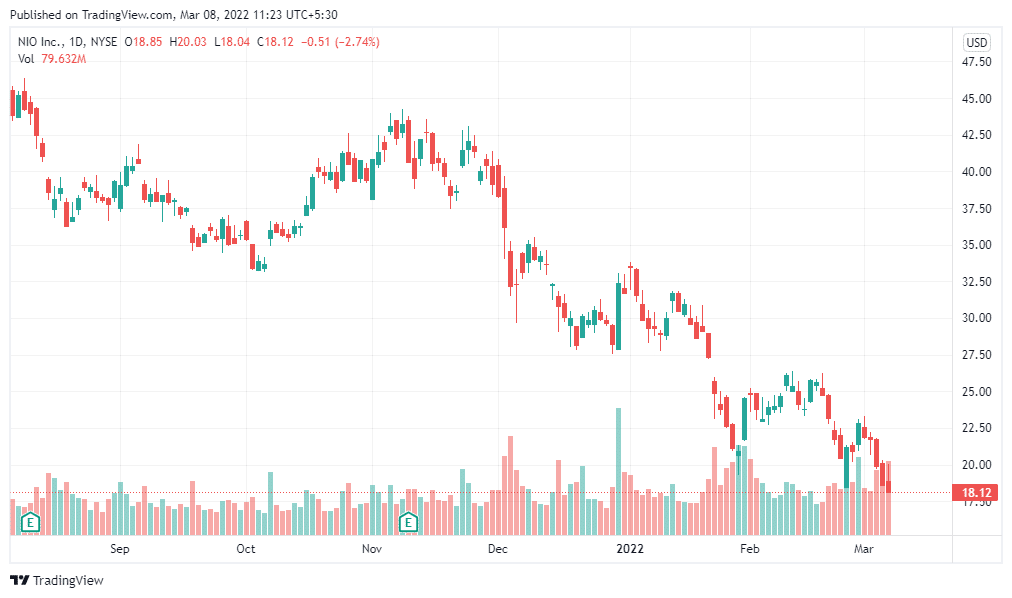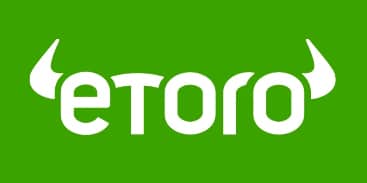Nio Share Price Forecast March 2022 – Time to Buy NIO?
Please note that we are not authorised to provide any investment advice. The content on this page is for information purposes only.
Shares of Chinese multinational automobile manufacturer Nio (NYSE: NIO) are in the red today, after closing at $18.12 as of March 7th (19:59 EST). Nio shares have decreased by more than 60% since they reached their all-time closing high in early 2021. As Wall Street expects multiple compression from growth stocks as interest rates rise, it has led to Nio shares not performing well. There are worries about supply chain issues where Nio and other auto stocks have had their production constrained by semiconductor chip shortages.
Nio – Technical Analysis
Nio’s financial statement indicates a market cap of $30.526 billion with total assets worth $10.679 billion. Revenue for 2020 was at $2.36 billion with a profit margin of -34.51% compared to $1.13 billion in 2019.

Moving averages such as Exponential Moving Average (10)(20.75), Simple Moving Average (10)(20.75), Exponential Moving Average (20)(22.19), Simple Moving Average (20)(22.74) and Exponential Moving Average (30)(23.40) are indicating a sell action. Oscillators such as Stochastic RSI Fast (3, 3, 14, 14)(4.96), Williams Percent Range (14)(−99.03), Bull Bear Power(−4.40) and Ultimate Oscillator (7, 14, 28)(37.55) are neutral.
67% of all retail investor accounts lose money when trading CFDs with this provider
Recent Developments
Nio was founded back in 2014 by William Li. It attracted several investors during its post-launch. Such as Tencent, Temasek, Sequoia, Lenovo and TPG. The company was awarded an “Autonomous Vehicle Testing Permit” by the California DMV in 2016. In April 2020, Nio secured approximately US$1 billion in new funding from a group of Chinese investors. It also announced a Norway expansion plan, saying it would begin delivering cars to Norway. The company delivered 24,439 ES8, ES6, and EC6 in the third quarter of 2021.
Nio has faced supply chain issues over the past two years. But the company has appeared to have navigated these challenges. Nio was delivering EVs at an annual run-rate of around 130,000 vehicles by late 2021. The company expects to stretch its annual run-rate output to 600,000 EVs. Nio’s management has also taken steps to increase brand loyalty and its long-term operating margins. It introduced its battery-as-a-service program where owners can charge, swap, or upgrade their batteries, as well as receive a discount off the initial purchase price of their vehicle in exchange for a monthly fee.
Nio will launch three new products in 2022. It has already started taking orders for the ET7 with deliveries expected to begin at the end of March. It will follow up this release with the midsize ET5 sedan that the company plans to start shipping in September 2022, priced at about $50,000 prior to any available subsidies. Additionally, the Battery-as-a-Service (BaaS) option will offer another $10,000 savings on the upfront cost.
Should You Buy NIO Shares?
Investors have to consider Nio’s rival’s success. For instance, Chinese Rival XPeng outsold Nio last month. This has caused its investors to briefly knock the stock down. However, the company’s monthly deliveries have been on an overall higher trajectory over the past two years even with the slight growth they have.
Nio has stated plans to double its production capacity in the next few years. It has also planned for a European expansion beyond Norway this year. While the Nio shares have bounced back slightly, it is still quite low compared to their all-time highs. This can make a good entry point for long-term investors who are searching for exposure in the electric vehicle sector.






